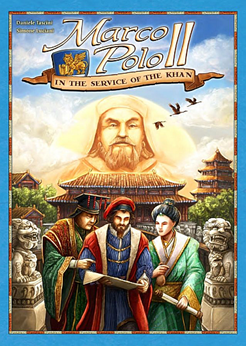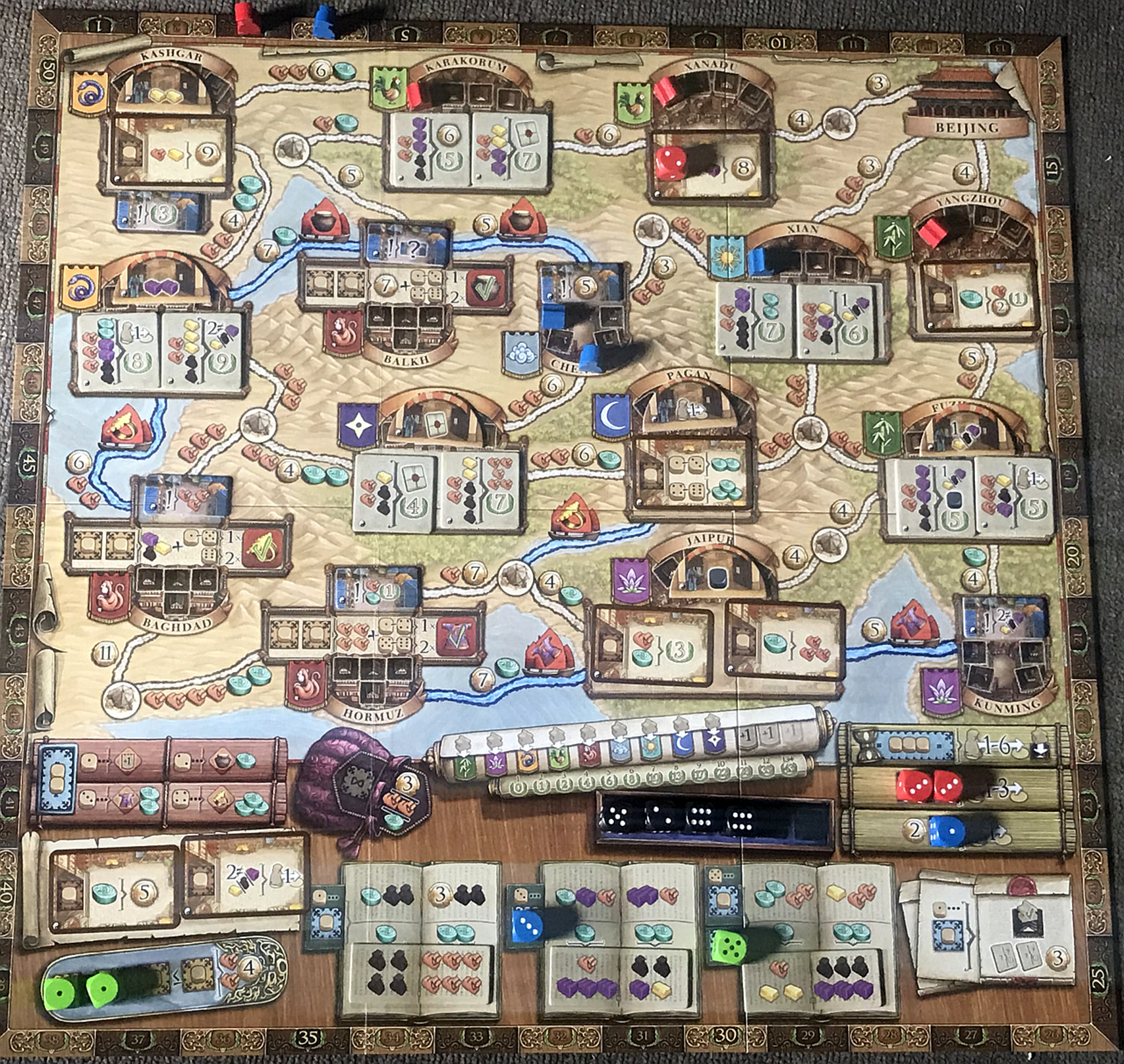 Due to a lack of power in the winter – using primarily solar power has its drawbacks – I have not been able to play board games with friends as often as I would like. In better days, this would not have been a problem, but we are in lockdown, as we have been for six long months, and I cannot see my friends except over the computer.
Due to a lack of power in the winter – using primarily solar power has its drawbacks – I have not been able to play board games with friends as often as I would like. In better days, this would not have been a problem, but we are in lockdown, as we have been for six long months, and I cannot see my friends except over the computer.
To make things worse, I have bought a few physical board games. When one of them is the sequel to one of my favourite board games of all time, having it sit there unplayed is just frustrating beyond belief.
However, spring is here, and finally I managed to get Marco Polo II: In the Service of the Khan to the (virtual) table.
The Basics
Marco Polo II is a dice-placement game for 2-4 players. The game lasts five rounds. At the beginning of each round, you roll five dice, with higher numbers generally better. (You get compensated if you roll poorly).
On your turn, you place one or more of your dice on an action space. Some action spaces can only be taken by one player, others allow more than one player, but they require you to pay coins in this case (with the cost equal to the value of the die you place, so that is a penalty for a high roll). This continues around the table until all dice are used, at which point the round ends and the board resets. At the end of the fifth turn, final points are scored and the highest score wins.
The primary activities of the game are:
- Moving to new cities and establishing trading posts
- Gaining goods, camels, and money
- Fulfilling contracts
With a limited number of turns and actions, it is always a struggle to do everything you want to do – and you have to also deal with your opponents taking actions you want before you, or getting to a city first.
The Changes
Compared to The Voyages of Marco Polo, this game feels a lot more complicated.
While the basic structure of placing dice and taking actions is the same, the actions on offer are almost all changed. The biggest “core” difference is to how you acquire goods. In Voyages of Marco Polo, there was one collection of action spaces where you could gain camels, pepper, silk, and gold. This is replaced by the “offers”, which instead of requiring greater quantities of dice, require a single dice. The higher the number, the more offers are available. And each offer has four options. Two have no extra cost, but the better two offers require jade.
Jade is a new type of good. You can use jade as camels or coins, but its primary purpose to pay for offers, though contracts also require it.
One other new element is the “guild seals”. These seals open up some routes, give you extra action opportunities, and are required to complete your goal card. The seals are available at one action spot, and there are three of them to collect. They start at a basic level, and you can upgrade them by paying goods and money. The upgraded level gives a start-of-turn bonus (camels, jade, or victory points) as well as opening up more bonuses.
The end game scoring gives bonus points for most contracts completed, as before, while also giving points for how many different city types you have visited. In Marco Polo, your goal cards had cities you needed to visit; in Marco Polo II, your goal gives you a bonus for visiting certain types of cities or upgrading certain seals.
There are more changes, so that while you can see the basic structure of Voyages of Marco Polo, you need to readjust to the new game.

The Play
Marco Polo II is a game where little things like analysis paralysis can quickly overtake you. While I think you have more options before to get what you need, there are also more options – so working out which are the ones you want and how to place your dice is trickier.
The board is busy. To perform some actions, such as taking new contracts, you need a trading post in a city which offers contracts. Some routes and actions require guild seals.
Dealing with all these choices is a thing.
The basic method of play is this:
- You look at your contract
- You see what goods you need to complete it
- You take actions to get those goods
- You complete the contract
Meanwhile, because you need visit cities to get more contracts and improve your end-game scoring, you are also looking for the best route through the cities.
And cities have special actions on them as well, which may prove more lucrative than the contracts.
A few elements of the game change from round to round: two generic city action cards each turn, plus the offers available. And if someone took the contracts from a city, they replenish. Otherwise, the board is mainly static. However, the layout of most of the city bonuses changes from game to game, meaning each game there is a new puzzle to solve.
Final Thoughts
The original Marco Polo feels tighter and easier to understand. This game has a few more hoops to jump through to do actions that were quite easy in the original.
However, as you have more ways of accomplishing actions, I think it is easier to find alternative ways of getting what you need. It is all a juggling act – can you keep everything in mind?
What I can say is that despite the similarities with the original game, it stands on its own. If you got a second variant of Ticket to Ride, then learning the play of the second was easy. Marco Polo II is more challenging. I hope to revisit it to improve my understanding of the game.
